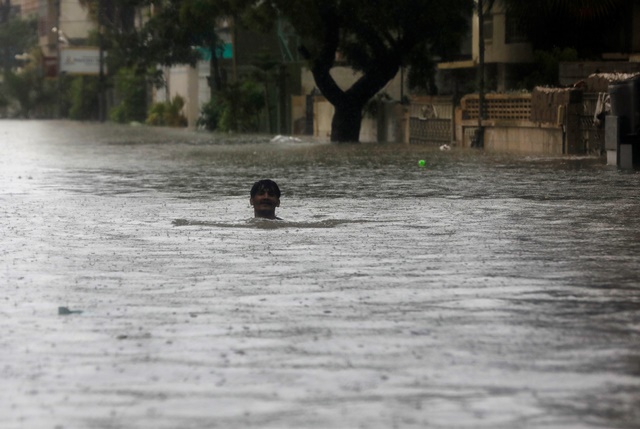
Every year, urban flooding in the cities and flash floods in the mountainous areas cause huge loss of life and properties during the monsoon season. However, the country has neither an effective telemetry system nor modern weather forecast radars for timely prediction of flooding.
“The country still does not have an effective aviation system to deal with flood disasters and other catastrophes,” the National Monsoon Contingency Plan 2020 compiled by the Natural Disaster Management Authority (NDMA) revealed.
According to the plan, Pakistan has a medium and long term forecast system capable of accurately predicting the weather for a period of only 7 to 15 days while the seasonal weather forecast accuracy rate is also not more than 65-70%.
The report indicated that the country is relying on old technology for weather forecast which makes it difficult to make standard and accurate atmospheric predictions. It said the availability of data on the discharge of water in the eastern rivers depends on timely information from India.
There is no telemetry system for flash flood warning in the mountainous regions in Khyber Pakhtunkwa (K-P), South Punjab, Azad Jammu and Kashmir (AJK), Balochistan.
Telemetry is the automatic recording and transmission of data from remote or inaccessible sources to an IT system in a different location for monitoring and analysis.
According to the contingency plan, Pakistan does not always have an aviation system ready for disaster management. Rescue and relief operations during natural disasters require application to the Pakistan Army or the Ministry of Interior.
This process takes time as it involves getting approval from the competent authorities; delays the relief operations and disrupts the operational activities of the army and navy ships.
The report said the NDMA provided heavy machinery during the natural calamities in Gilgit-Baltistan to remove icebergs, especially on the Karakoram Highway in 2017 to maintain traffic.
However, heavy machinery is not available in the hilly areas of the K-P, Balochistan and the AJK to carry out rescue activities and remove icebergs during natural calamities.
According to the report, permanent settlements and large-scale encroachments in river waterways and flood drains in different cities also increase the damage during crises, creating difficulties in relief and rescue operations.
In potentially flood-prone areas, it is also difficult to move local people from their home areas to safer places during the monsoon season. Instead of facilitating evacuation, the locals ask for help.
According to the report, the district disaster management authorities are working on an ad hoc basis to control flood damage in various districts across the country but they neither have dedicated staff nor experts for the purpose; rather the responsibility is given to a few district administration officials.
The report said during the floods, Rescue 1122 had proved its usefulness. However, Rescue 1122 service has not yet been made available in all the provinces.
























COMMENTS
Comments are moderated and generally will be posted if they are on-topic and not abusive.
For more information, please see our Comments FAQ